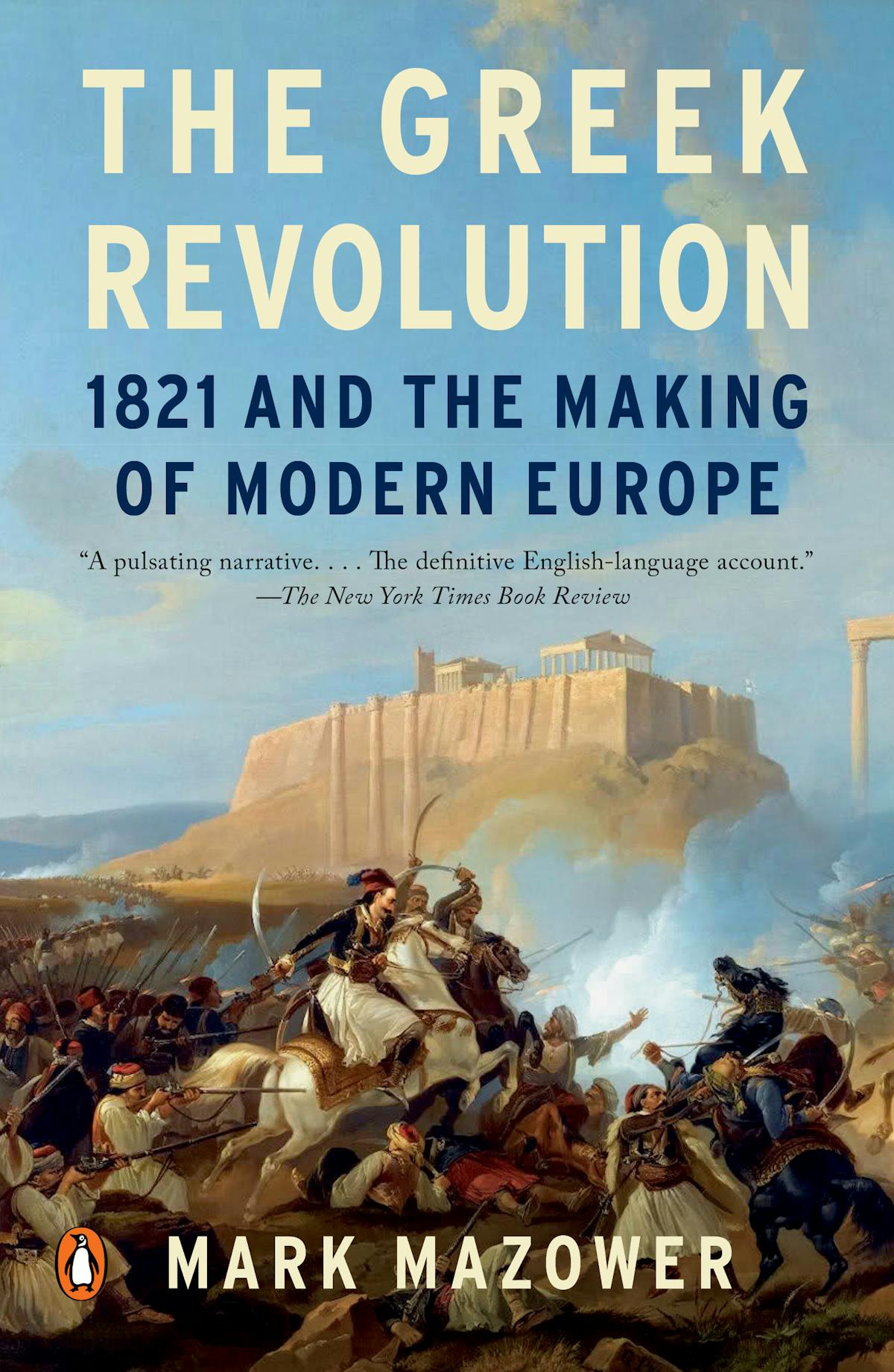1821 Greek revolution, most heroes and fighters were Albanians
 Mechanicus 08/05/2024
Mechanicus 08/05/2024 
In the book Mazower retells the 1821 Greek Revolution, also known as the Greek War of Independence—a revolt in which Greece gained independence from the Ottoman Empire after several years of fighting—from Greek and international perspectives.
Passages from the book:
On the Greek side, there were the Christian Albanian Souliot bands, hardened mountain fighters based around clan leaders who gradually became integrated into the national war effort. There were also the Albanian-speaking seamen of Hydra and Spetses who provided not only the core of the Greek fleet but also leading members of the Greek government – including one wartime president – who occasionally used Albanian among themselves to prevent others on their own side from reading their correspondence.
In this pre-national world, language barriers were low and no one, a handful of intellectuals aside, worried about linguistic purity. A maritime folk, the Greeks spoke a language rich in words from Arabic, Spanish, Albanian, Turkish and Slavic.
A lifelong revolutionary, teacher and intellectual, nearly fifty years old, Perraivos was a link between the Etaireia and an earlier generation of Balkan radicals. He had been a comrade of the almost mythical Rhigas Ferraios before the latter’s arrest and execution in 1798. Since then Perraivos had formed a close bond with the Souliots, the exiled ChristianAlbanian tribes who had suffered greatly at the hands of Ali Pasha.
As the Souliot chieftains knew nothing about the Etaireia, Perraivos decided to confide what he called ‘the great purpose of the race’ to them and produced a letter written by Ypsilantis and addressed to ‘the brave leaders of the Greek armies’ in which, in his usual lofty way, the prince urged the Souliots to show the world they were descendants ‘of the glorious heroes of Marathon and Thermopylae’.** In fact, nationalism was an entirely alien concept to these Christian Albanians and they certainly did not see themselves as leading ‘Greek armies’**: the following year they would even tell the Russian Tsar – in a confidential message begging for assistance – that ‘we don’t have anything in common with the other Greeks’. They felt generally closer to their fellow Albanian Muslims than they did to the Greeks, and Ypsilantis’s rhetoric surely counted for less than the trust the Souliots placed in Perraivos himself.
Kolokotronis also had very close ties with local Albanian Muslims, cemented mostly through blood-brotherhood (adelfopoiisi). His grandfather had been thus linked with an Albanian bey in the Morea, and Kolokotronis himself was so close to the bey’s grandson, a notable called Ali Farmakis, that he twice risked his life for him: once to help him fight Ottoman troops, and once after he died, by going and paying his condolences to Ali’s widow in person. Folk songs commemorated their friendship.
Around Mesolonghi and north to the Gulf of Arta, the peasantry were mostly Greeks. But from Arta northwards, the population was increasingly Albanian in speech and soon one was in what the Greeks knew as ‘Arvanitia’ (the land of the Albanians) with both Christian and Muslim populations, the erstwhile heartland of Ali Pasha but now contested by a large Ottoman army.
Quiet, prosperous and slightly off the beaten track, Ottoman Athens possessed nothing like the strategic or administrative significance of Tripolitsa, Nafplion or Patras. There were a few mosques, as well as an open-air mihrab in the ruins of the Temple of Olympian Zeus where, we are told, the inhabitants would gather together to pray for rain; the hamams included one on the slopes of the Acropolis where Muslim and Christian women took a bath together at prescribed times. There were two Greek schools and a learned tradition among the local Christian notable families, who successfully retained most of their privileges right up until 1821. A tower in the market housed a mechanical clock given by Lord Elgin, a unique amenity at that time in the Ottoman Empire but a paltry exchange for his vandalism of the Parthenon marbles. A large majority of the town’spopulation – unlikely to have totalled much more than 10,000 – was Christian; perhaps another 12,000, the majority of them Christians but Albanian-speaking, were villagers working the olive groves and vineyards in the plain. Muslim inhabitants both of the town and in the Attica region generally were a minority.
By far the commonest way Greek villagers referred to themselves before 1821 was as Romioi – meaning literally ‘Romans’ but in fact simply Orthodox Christians.

About Mechanicus
The head of the Albanian technological and patriotic revolution.